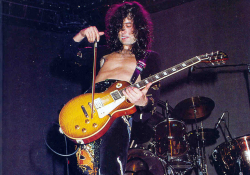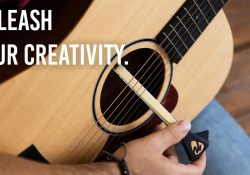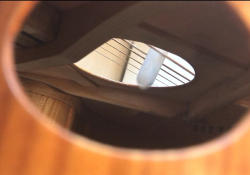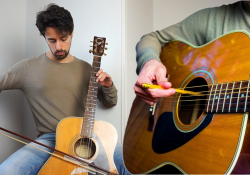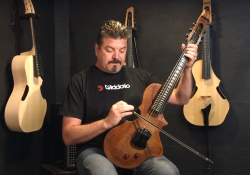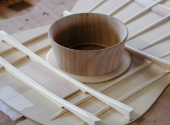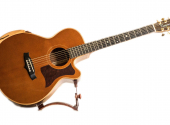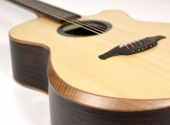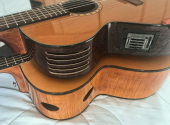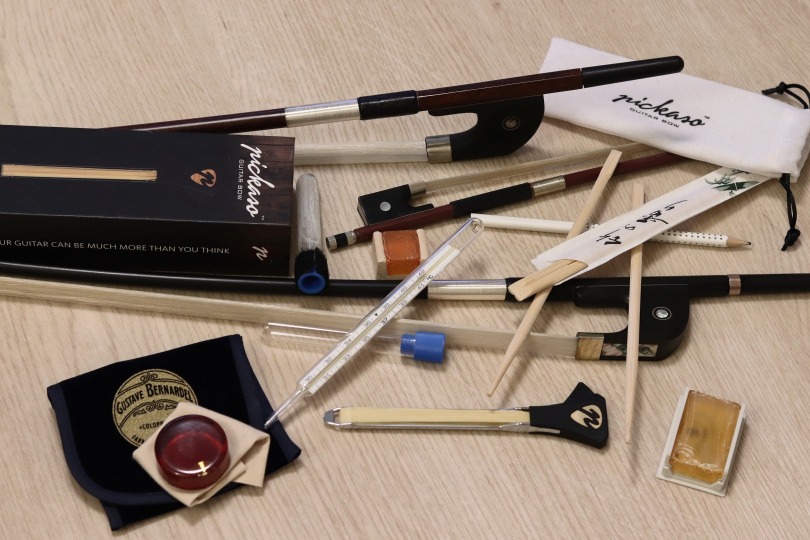
Laboratorium of Dr. Hyenik #6: bow, bow, bow your guitar!
We have encountered the guitarist's desire for long tones once in our Laboratorium, but it is not necessary to limit oneself to electromagnetic-effect solutions only. Another way, a little more manually demanding but all the more real, can be exciting physical bows – at that, using everyday items creatively.
Bows
When you say guitar bow, people automatically think of Jimmy Page and his psychedelic wizardry, younger people might think of Icelandic ambient artists of Sigur Rós, but the list is much longer than it might seem at first glance. Experimenters Radiohead and Mike Oldfield probably won't surprise anyone, and early Pink Floyd were also looking for untrodden paths, but the likes of Whitesnake or Pearl Jam, well, that might be a bit of a shock. Moreover, the immortal Jimmy Page was another Christopher Columbus for the media world discovering America, as credit for the real discoverer is usually given to Eddie Phillips (the Mark Four/the Creation), who was probably the first one to experiment with this unconventional sound.
I first saw the guitar bow with the innovator Dagmar Andrtová, who, by the way, used unconventional techniques on purpose and without contact with the rock world (even when talking about "hammering"). Recently, I was intrigued by South African Gary Thomas aka Moodship, who, in addition to taking pictures of nature with his mobile phone, also excels in the technique of long bowing on an acoustic guitar.
Technique
It is clear that "bowing" a guitar requires certain conditions. The two basic physical complications are ergonomics and friction. This is because a guitar is not shaped to accommodate a fairly sweeping bow motion and the fretboard/bridge has too small a radius (curvature), making it almost impossible to play single notes. Sigur Rós guitar technician Jónsi explains how he has modified his guitar for this reason.
Guitar strings are not ready for producing tones by bowing, but neither is the bow itself. A guitarist, unaffected by compulsory violin lessons (or home soldering) in his youth, might be surprised by the mysterious word rosin, without which this whole shenanigan cannot work. Applying a little of this resin to the horsehair is necessary to increase friction and make the bow produce some sounds, as the well-known YouTuber Music Is Win demonstrates in an amusing video. There you will also learn what basic effects can help this guitar technique. So you can go and fetch your rosin, lift up the middle saddles on the bridge, take the bow and... wait, what bow? It doesn't really matter, just one that you really like. Often, in addition to the most common violin strings, cello bows are used (because they are longer), but I personally prefer a double bass one (called German), whose large bow frog allows it to be held underhand.
Creative innovation
The internet stunner with tens of millions of views Alexandr Misko, demonstrates that it is not necessary to limit oneself only to classical strings, and interesting sounds can be obtained from the guitar, for example, with chopsticks (of course, the obligatory rosin is applied, too). The acoustic guitar has one indisputable advantage for this technique because we can insert the object perpendicular to the strings into the sound hole, albeit only making short bows, but in a much more natural position than with the electric guitar.
Another enthusiastic promoter of weirdness and imitation of different sounds on the guitar with tens of millions of views on YouTube, Davidlap, uses a regular pencil the most. But we need not look far, because even in the Czech Republic creativity is running wild and, for example, the Anděl Awards winning folk musician Honza Žamboch can make a guitar sound with a glass thermometer! Of course, I tried it too, but somehow it didn't work, and so, as a doctor, I continued to patiently experiment until I ended up with a plastic tube for morning urine. Another obscure gadget in my arsenal is a long brush, which gives the impression of being closer to a stringed instrument than a classic plucked guitar, as I demonstrate in my Plini contest contribution.
The latest innovation in the field of guitar bowing is a bow with a funny name Pickaso. A great and technologically polished idea that I immediately ordered, because this mini bow adapted to the needs of guitarists is, in my opinion, the best gadget in this field at the moment. Using the Pickaso and other things I contributed to the Davidlap cello trick challenge, so you can hear different techniques in one short piece.
Hybrids
The desire to combine these two different worlds has been constantly bearing innovative fruit. Certainly, the most sophisticated and touching instrument combining guitar and viola/cello, which Jonathan Wilson has been developing and gradually improving and promoting for many years, is a beautiful example of this. His GuitarViol has graced the soundtracks of such global blockbusters as 300 and Game of Thrones. In this case, too, it's "just" a development of an idea based on a historical instrument called Arpeggione which was a six-stringed, plucked cello tuned like a guitar. Of course, the viola da gamba can also be considered as another intermediate link in this very interesting development.
GuitarViol isn't exactly a cheap affair, however, so DIY enthusiast Jesse Bond has put together an illustrative 20-part series for those interested, including drawings on how to easily make his Cellotar using the basic equipment of any workshop from materials costing less than $100. He uses a variety of fun innovations in addition to recycling, such as a fretboard made from plastic waste pipe and frets made from cable ties so you can avoid overly specialized violin or guitar technology.
Bazmeks
Of course, in creative explosions, sometimes something isn't taken on board and despite the marketing efforts of the creators, their inventions don't work very well. I can name a few, such as the weirdness Piranha bow, the brush-spring Jellifish pick, which I sometimes use, but it certainly hasn't brought me closer to the cello sound, as the ads of that time tried to claim, or the previously mentioned overly complicated Gizmotron.
Final fanfare
So don't be afraid to let your imagination run wild, like David Kollar, for example, who participated in the record of the renowned art-rock guru Steven Wilson (maybe?) thanks to his guitar mini-bow. Or like the ace of avant-garde guitar Fred Frith, who uses a rich variety of completely unconventional techniques, where, in addition to ebow and bow, he uses, for example, a coarse string under the strings, which he pulls to make similar (odd) sounds. This totally unbridled art with the familiar name of the "prepared guitar" will be discussed some other time, because this unorthodox approach to guitar has no limits and deserves some attention as well.
If you have found an error or typo in the article, please let us know by e-mail info@insounder.org.

